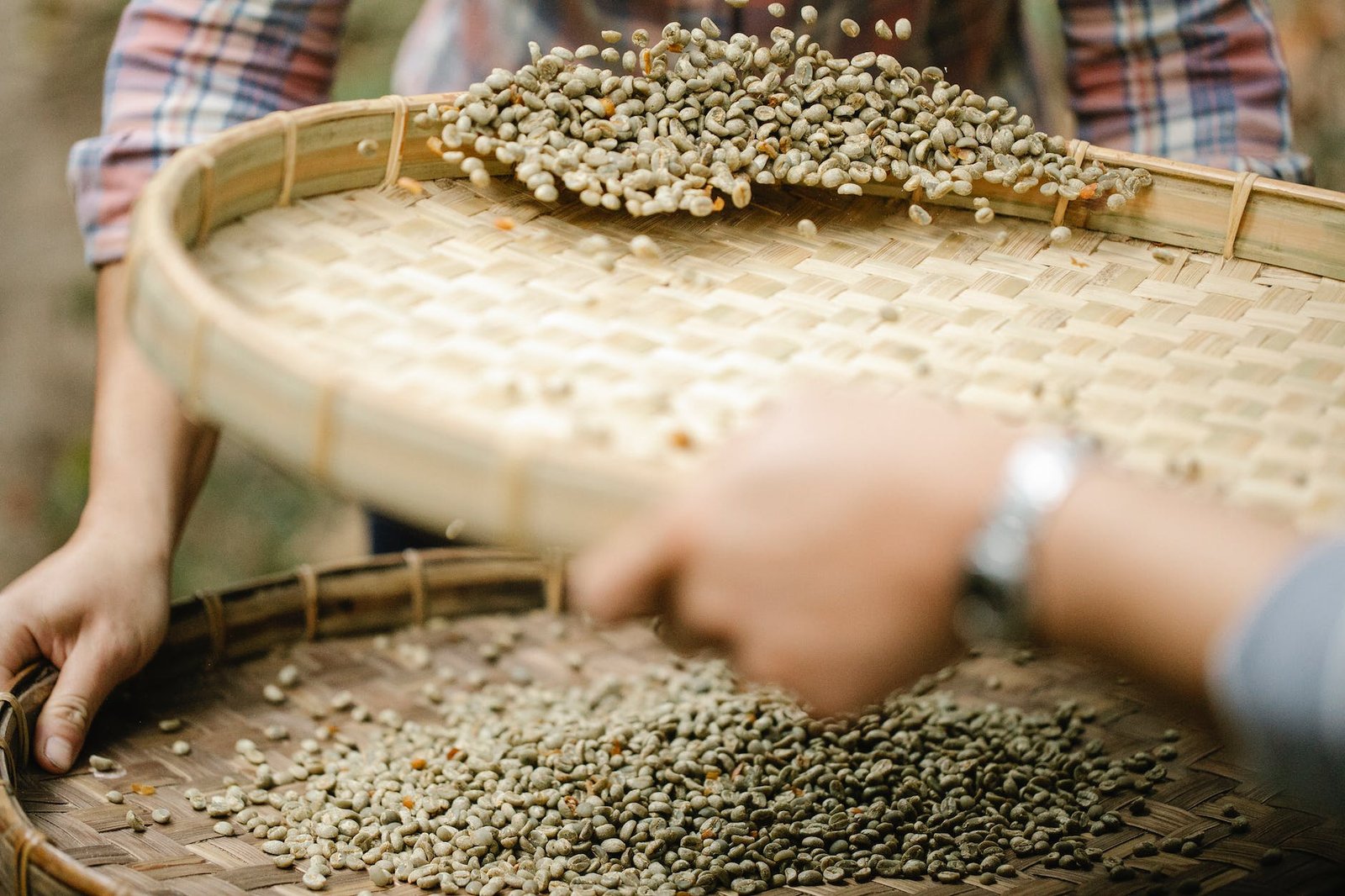The Various Methods of Processing Coffee
Coffee processing is a crucial step in turning freshly harvested coffee cherries into green coffee beans that are ready for roasting. There are several methods of coffee processing, each influencing the final flavor profile of the coffee. The three primary processing methods are:
- Dry (Natural) Processing:
- In the dry or natural processing method, freshly harvested coffee cherries are spread out in the sun to dry. The whole cherries are often left intact during the initial drying phase. As the cherries dry, the pulp naturally shrinks and separates from the beans inside.
- Once sufficiently dried, the cherries are mechanically hulled to remove the dried pulp and reveal the green coffee beans inside.
- Natural processed coffees often have a heavier body and more pronounced fruit and fermented flavors due to the extended contact between the bean and the fruit during drying.
- Wet (Washed) Processing:
- In the wet or washed processing method, the outer skin of the cherries is removed mechanically, and the beans with their mucilage-covered parchment are then fermented in water tanks.
- After fermentation, the beans are thoroughly washed to remove the remaining mucilage, and they are then dried. The drying can be done either in the sun or using mechanical dryers.
- Washed coffees tend to have a cleaner cup profile with bright acidity and distinct, varietal flavors, as the fermentation process helps remove some of the fruit residues.
- Pulped Natural (Honey) Processing:
- Pulped natural, also known as honey processed, is a hybrid method combining elements of both natural and washed processing. The outer skin is removed, but some or all of the mucilage is left on the beans during drying.
- The level of mucilage left on the beans can vary, ranging from yellow (yellow honey) to red (red honey) to black (black honey). The more mucilage left, the more sweetness and complexity the coffee may retain.
- Pulped natural coffees often exhibit a balance between the body and sweetness of naturally processed coffees and the cleanliness of washed coffees.
These processing methods significantly influence the flavor, acidity, body, and overall characteristics of the final cup of coffee. Additionally, variations in processing methods can occur within a region or country, contributing to the diversity of coffee profiles available to consumers. Specialty coffee often highlights specific processing methods as part of its marketing and labeling, as it plays a crucial role in shaping the unique qualities of each coffee.
Tags: coffee, coffee processing, coffee processing methods

